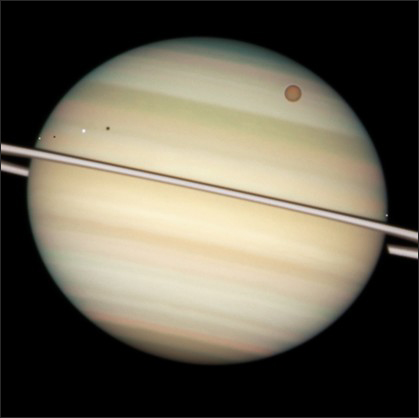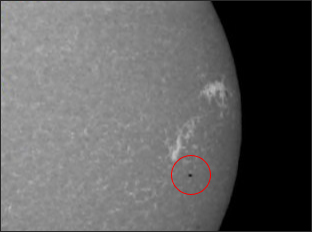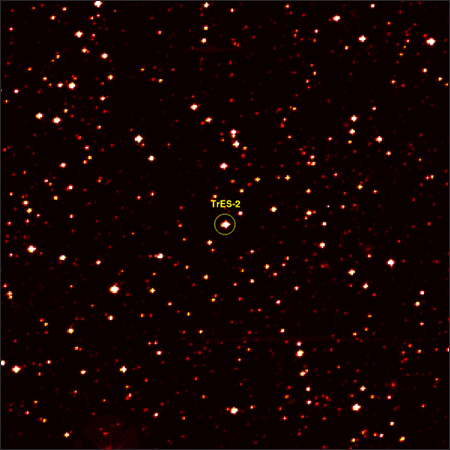|
|
||
|
When one celestial body appears to move across the face of a larger celestial body, it's called a transit . A moon can be seen transiting its planet, or a planet might be observed transiting the sun. From the earth, the only planetary transits we can see are those of Mercury and Venus, because those are the only planets that can be between us and the sun. And these are rare events. Transits of Mercury occur about a dozen times a century. The last one was in 2006, and the next will be in 2016. Venus transits are less frequent still; they occur in pairs, with eight years separating the two transits, and then more than a century will pass before there's another pair. The most current are the transits of 2004 and 2012. The next pair won't be seen until 2117 and 2125. Transits don’t provide the spectacular display that a solar eclipse does, but they’re useful for scientific research. In the 1700s, Edmond Halley (of comet fame) realized that transits could be used to calculate our distance from the sun—and from that, we could understand the dimensions of the entire solar system. Using the two transits of Venus that occurred that century, astronomers found a good approximate value for the sun-earth distance. Observations of those transits of Venus also suggested that Venus has an atmosphere, which we now know to be the case. Today, astronomers are looking at transits farther afield: planetary transits of other stars in the Milky Way. The planets themselves are too dark and distant to be seen directly, but if they transit their star, very slightly dimming its light, scientists can infer their existence. In March 2009, NASA launched the Kepler spacecraft into sun orbit, where it is keeping its telescope eye on well over 100,000 stars. Its ultimate goal is to track down planets the size of the earth. In particular, astronomers are interested in planets that orbit stars similar to our sun in the “habitable zone”—that is, at a distance that would make it possible for liquid water to exist on their surface, potentially making it possible for life to exist. In February 2011, the Kepler Mission team announced that more than 1,200 planet candidates have been identified. Of these, five are both close to the size of the earth and orbit in the habitable zone of their stars. The Kepler mission should go a long way to help answer the question "Are we alone?"
To watch our 2012 and 2004 transit of Venus webcasts, and to learn about the historical importance of Venus transits, visit our
Transit of Venus site
.

|
The small dot (lower right) is Mercury making its way across the face of the sun on November 8, 2006. 
The Hubble Space Telescope captured this image of four of Saturn's moons transiting the planet in February 2009. On the left are the icy moons Enceladus, Dione and their shadows. Titan, Saturn's largest moon, is on the upper right, and, at the far right, is Mimas. The shadows of Titan and Mimas have already passed off the face of Saturn.
In April 2009, Kepler discovered a "hot Jupiter," a giant gaseous planet that orbits close to its star. Named TrES-2, it races around its star (circled) every two-and-a-half days. The image shows only a fraction of the stars Kepler can see. |
|

